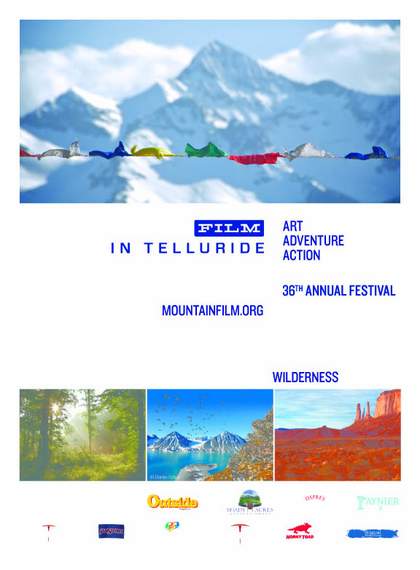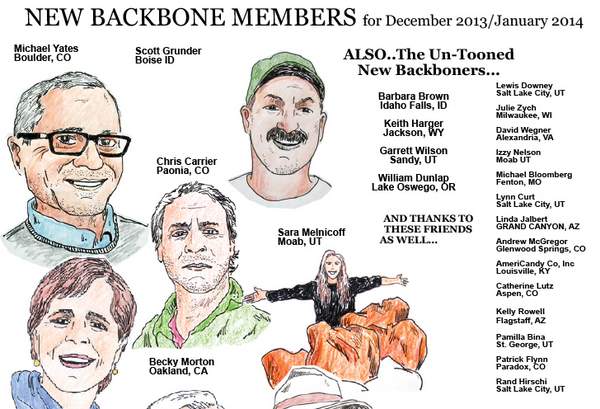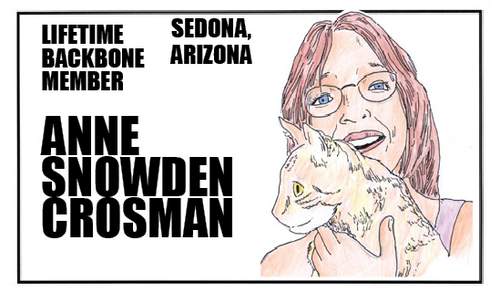EDITOR’S NOTE: Recently the threat (or promise, depending on your point of view) of new oil and gas development in the area of Big Flat in Grand County has once again aroused local passions, for and against this renewed effort to exploit the area’s energy resources.
This isn’t the first time the issue has been debated in Moab. In 1991, Big Flat was in the news and writer B.J Eardley wrote this essay for The Zephyr. The more things change, the more they stay the same…JS
The possibility that drilling activities on the Big Flat area west of Moab will demonstrate a sustained oil production has precipitated a mixed reaction in the Moab community. To some, an oil boom in Moab means more jobs, increased royalties, higher lease and rental payments and the additional benefit of diversifying Grand County’s economic base. For others, the optimistic hopes are shadowed by potential impacts on wildlife, recreational use and public safety. While both commercial drilling companies and horizontal drilling technique has many specialists optimistic. The technique, which has not previously been used in the area, exposes a larger area of rock to the drilling operation, increasing chances for success.
Taking a position that has angered some citizens, the BLM has indicated that it is waiting to call for a new Environmental Impact Statement until the long-term economic viability of the drilling project is ascertained. Previous oil and gas exploration in the area has met with numerous problems.
That the new drilling technique could mean a major drilling operation in the area, however, has spurred the Southern Utah Wilderness Alliance and the Utah Chapter of the Sierra Club to file an appeal with the BLM’s state office to prevent them from granting additional well drilling permits. Legal action seems almost assured if the BLM issues more permits without preparing a new EIS. While Columbia Gas Company, who has been successfully pumping 700 barrels of oil per day from their Big Flat well, maintains that they are aware of the environmental sensitivity of the area, wildlife managers and recreationists are skeptical.
The question of public land management hinges once again on the question of conflicting use. “The opportunity,” says Brad Palmer, BLM’s Grand Resource Area Manager, “is to show that oil and gas development, if done in a sound manner, can co-exist with other multiple uses.”
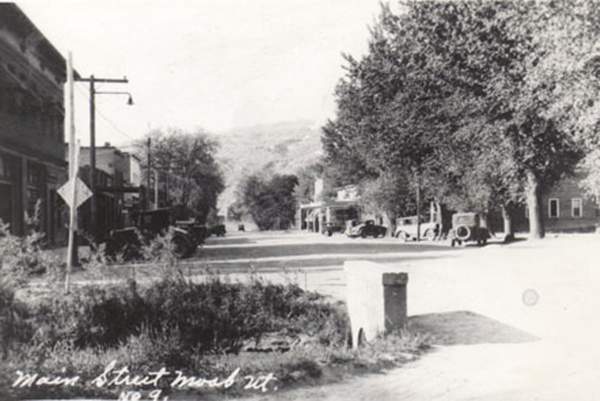
Grand County has dreamed of an oil boom before, but it was a dream that was unclouded with the question of conflicting use. Perhaps no story was more exciting or received more state-wide attention that the development of the John L Shafer No.1 on the Big Six Dome 18 miles downstream from Moab.
The year was 1925. Like Big Flat, the Big Six offered the hope of locating a commercial well of oil in the thick shale beds of the Pennsylvanian Paradox Fold and Fault Belt. Folds and faults formed by movement of underlying salt are typical traps for oil and gas in Grand County. Most traps were formed when sandstone or fractured limestone was overlain by an impervious seal of shale. Isolation and transportation difficulties, however, were a deterrent to oil exploration in the rugged area of Grand County.
Attempts to drill on the Big Six Dome had begun five years earlier by the locally owned Big Six Oil Co., but drillers had encountered a number of problems and the project finally ran out of money. By 1925, the price of crude was going up almost daily and the Big Six Co. decided it was time to search for a larger company to absorb the huge expense of drilling. Enter the Midwest Exploration Company. The company was intrigued with the Big Six area and what geologists declared to be one of the most perfect oil domes in the U.S. Faced with the growing scarcity and equally growing dependence on oil, Midwest formed a company to concentrate on oil development along the Colorado River.

In January of 1925, Midwest contracted with the Moab Garage Company to ship 200 tons of drilling equipment from Thompson to the John L. Shafer No. 1 site at the apex of the Big Six Dome. The equipment was to travel by truck to Moab and then by barge to the well site on the river. The Moab Garage Co., which had already begun using the Colorado River as a transportation corridor, built a power barge with an 8 ft. paddle wheel that could be used to move equipment down river to the well site.
Ice flows prevented the 15 ft. by 45 ft. barge from transporting any equipment until early March, but the icebound river didn’t freeze the anticipation of locals. “If oil is obtained at the midwest well,” said Grand Valley Times editor L.L. Taylor, “the rush to this section by oil people will rival any similar occurrence in the history of the west. The river domes are said to be the last great unexplored structures of the west. If they contain oil, nothing in the world will prevent a real stampede to Moab.”
On March 5, the first boat load of drilling equipment slipped down the river. The Colorado was at its lowest point in recorded history, giving the boat with its 12 ton cargo a true test. To the delight of area navigators, the boat passed with only a few minor setbacks. Traveling from 3 to 8 miles an hour, Moab Garage’s barge continued its daily runs of equipment: railroad tiles for the 800 foot track that would connect the rig with the unloading pier; construction material for the 90 foot derrick which would be erected 75 feet from the banks of the Colorado River; and an expanse of supplies that would give Frank Shafer No. 1 the reputation of being the best equipped oil camp in the state. By the end of the month the only oil camp in the country to be reached by water had begun to take shape.

As Moab waited, anticipated, and conjectured, the success of the Moab Garage’s barge confirmed the recreational potential of the Colorado River. Commercial ventures on the river had been attempted before, but they had all met with failure. The reliability of the power barge soon inspired many locals to charter the craft for pleasure excursions when it was not in use handling freight for the oil rig. It was also speculated that tourists, once they became aware of the option for river excursions, would covet an opportunity to enjoy the magnificent scenery of the canyon of the Colorado. “The successful operation of the power barge…marks a new era in the history of Moab,” said the Grand Valley Times.. “The feasibility of operating a craft of this size on the river is proven, and hereafter boat trips down the Colorado River canyon, heretofore impossible except in small motor launches, will be every day occurrences. Regardless of the outcome of the oil explorations, the navigation of the Colorado in the future is assured.”
Each subsequent week, the Grand Valley Times offered front page coverage of the progress of Midwest’s Shafer No. 1, along with other oil activity around the county. Readers heard of the Crescent Eagle near Thompson and the Cisco No. 1 when the well blew and the gas was ignited by lightning. Bidding for royalties on Big Six reached new highs when as much as $4200 was paid for a 1% royalty on three 640 acre tracts. Watchful eyes turned to southeastern Utah. In Salt Lake City, a local candy company introduced a candy bar called the “Big Six,” named for the dome where Utah’s oil future momentarily rested.
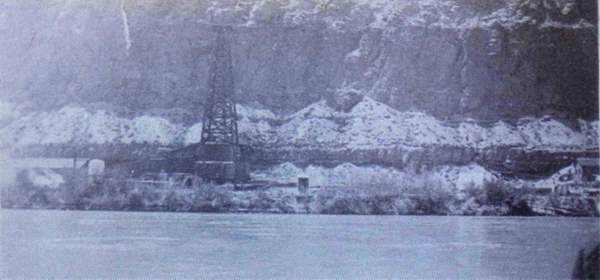
As drilling continued, officers from the Geologic Survey commented on the deposits of potash that had been encountered as a result of oil drilling in southeast Utah. “The pure potash salts,” they said, “may be worth more than any possible oil developments.”
Meanwhile, Editor Taylor encouraged Grand County citizens to support the drilling operations: “Wildcatting for oil in a new district is a fearfully expensive, heartbreaking undertaking at best. The companies, big or little, that are wiling to spend hundreds of thousands of dollars in an effort to develop the oil resources in a district should have the good will and cooperation of every citizen…Happily this is the case in Grand County.”

Finally, in October, a heavy flow of gas was encountered. They crews began “mudding in” the well to shut off the water and gas flow. They were encouraged. With plans to drill from 3500 to 4000 feet, the contact of wet gas at only 1408 feet was an indication that oil could be struck soon. A month later, another flow of gas and water was encountered. By virtue of a newly installed control head, the crew was able to harness the gas as a fuel source for the camp, but the gas pressure continued to make it difficult for the drillers to stay in the derrick where the highly combustible vapors surrounded them. The gas was entirely unlike that found at Cisco and other areas of the region and was definitely believed to be coming from a pool of oil.
And, on December 10, 1925, the Grand Valley Times announced in 2 inch headlines: “Big Oil Gusher Blows In—Greatest Oil Strike in the State’s History.” Behind the scenes, the story was dramatic. The oil had come in while the crew was eating breakfast. As it gushed form the well, it ignited and sent flames 300 feet into the air, totally destroying the derrick. After a 10-hour battle to extinguish the fire, the well continued to gush and spurt oil as high as 300 feet into the air. The river barge, which had been operating virtually without a hitch throughout the year was suddenly shut down for repairs. Uncontrolled rivers of oil began to flow into the Colorado. Even after equipment was able to reach the well, casing problems allowed the Big Six gusher to defy containment. It was feared that the oil would continue to be lost until a new derrick could be built and the casing cemented in on caprock.
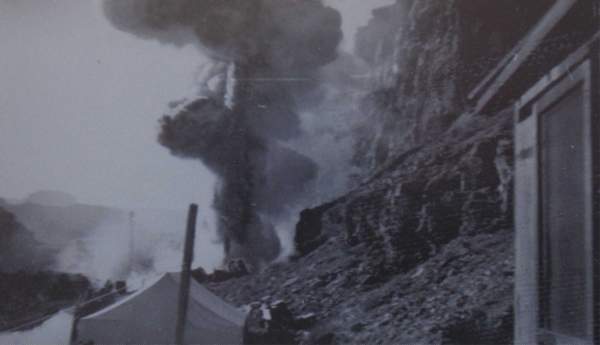
For Moab, though, the environmental disaster and the loss of oil were thin cries in the background of a general roar of excitement. The oil gushing from the Shafer No. 1 was dark green, of high gravity and gasoline and lubricating qualities. The Pennsylvanian Paradox Formation was a proven oil producer. The boom was real and promised more exploration in the oil domes of southeastern Utah. Editorials in the Moab and Salt Lake papers encouraged Moab to prepare for the boom and predicted that the town would grow to a population of 5,000-10,000 in two or three years. “Let it not be said that we don’t know how to take advantage of a favorable opportunity when one presents itself.”
For its part, Utah clamored to attach title to school lands around the Moab area, since most were yet unsurveyed. If known to contain mineral wealth before a survey, the state could only receive 3/8’s of the royalty for the schools. But, if the state could attach title before the mineral value had been discovered, they would have a chance at 100% of the royalties for the school system.
As Grand County faced 1926, they did so with hope and promise for a successful future. “With the advent of the year 1926,” said the Times, “Southeastern Utah faces the most alluring prospects in its history. Now that oil in commercial quantities has been discovered in the vicinity of Moab, this part of Utah will rapidly forge to the front as one of the richest and the most populous sections of Utah.” That was Moab’s hope—and it was based not solely on the success of oil, but in partnership with agriculture, livestock, recreation and tourism.
For a time, the face of Moab did change to accommodate an oil boom, but the town would wait another 30 years before the uranium boom would arrive with enough magnitude to forever change the complexion of the Moab valley and its surroundings. What of the Shafer No. 1? Drilling continued, but water flow from a higher elevation could not be controlled. Oil and gas continued to be encountered but recrystallization of salt was a continuous problem. Drilling was finally suspended when the casing collapsed. Developers remained encouraged by this first attempt. Other wells were drilled, but no gushers were found.
In the process of oil exploration, other resources were discovered: helium, natural gas, and potash, which created new potentials for development. Unexplored country was brought to the attention of hundreds of new eyes who were tantalized into further exploration. In 1925, the people of Moab hoped that they could have it all: the wonders of nature, farming, livestock, tourism, recreation, and the economic gains of mineral, oil and gas development. The richness and fortitude of the landscape seemed limitless. The dream was strong.

Many of the dreams of 1926 are realities today: river recreation, potash development, but our experiences have taught us that there are limits. Even the BLM recognizes that multiple use does not mean that every use can be made to be compatible. We know that there is a value in our land and our wildlife that defies economic reasoning. Still, we want it all. As a society, we are even more dependent on oil and gas than we were in the 20’s. Our tax dollars are stretched beyond their limits and the economic viability of our county is a delicate thread strung across the wildness of our land. We are looking for a balance, but our ability to agree on a satisfactory equilibrium remains as illusive as the dream of oil that was shared by the “wildcatters” of the 20’s.



